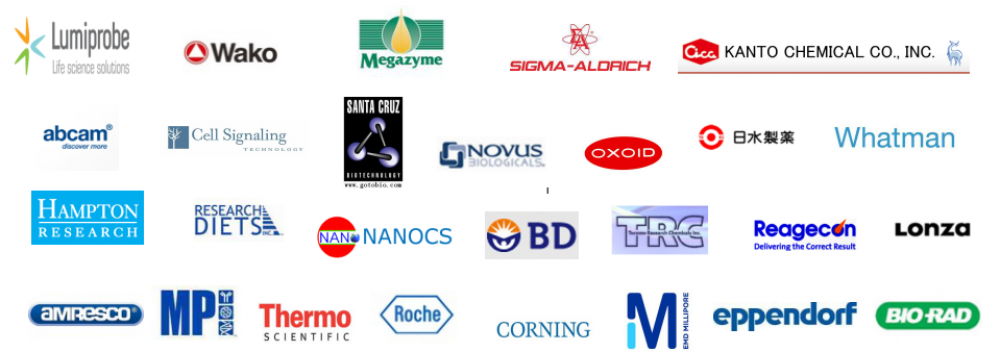寡核苷酸与DNA的点击化学标记
Click chemistry is a versatile reaction that can be used for the synthesis of a variety of conjugates. Virtually any biomolecules can be involved, and labeling with small molecules, such as fluorescent dyes, biotin, and other groups can be readily achieved.
Click chemistry reaction takes place between two components: azide and alkyne (terminal acetylene). Both azido and alkyne groups are nearly never encountered in natural biomolecules. Hence, the reaction is highly bioorthogonal and specific. If there is a need to label an oligonucleotide, alkyne-modified oligonucleotides can be ordered at many of the custom oligo-synthesizing facilites and companies.
We recommend using the following general protocol for Click chemistry labeling of alkyne-modified oligonucleotides with azides produced by Lumiprobe Corp. The auxiliary reagents can be ordered at Lumiprobe Corp..
- Calculate the volumes of reagents required for Click chemistry labeling using the table below. Prepare the required stock solutions (see Appendix).
Reagent Final concentration in the mixture Stock solution concentration Oligonucleotide, alkyne-modified Varies (20 – 200 uM) varies Azide 1.5 x (oligonucleotide concentration) 10 mM in DMSO DMSO 50 vol % – Ascorbic acid 0.5 mM 5 mM in water Cu-TBTA complex 0.5 mM 10 mM in 55 vol % DMSO - Dissolve alkyne-modified oligonucleotide or DNA in water in a pressure-tight vial.
- Add 2M triethylammonium acetate buffer, pH 7.0, to final concentration 0.2 M.
- Add DMSO, and vortex.
- Add azide stock solution (10 mM in DMSO), and vortex.
- Add the required volume of 5mM Ascorbic Acid Stock solution to the mixture, and vortex briefly.
- Degass the solution by bubbling inert gas in it for 30 seconds. Nitrogen, argon, or helium can be used.
- Add the required amount of 10 mM Copper (II)-TBTA Stock in 55% DMSO to the mixture. Flush the vial with inert gas and close the cap.
- Vortex the mixture thoroughly. If significant precipitation of azide is observed, heat the vial for 3 minutes at 80°C, and vortex.
- Keep at room temperature overnight.
- Precipitate the conjugate with acetone (for oligonucleotides) or with ethanol (for DNA). Add at least 4-fold volume of acetone to the mixture (If the volume of the mixture is large, split in several vials). Mix thoroughly and keep at -20°C for 20 minutes.
- Centrifuge at 10000 rpm for 10 minutes.
- Discard the supernatant.
- Wash the pellet with acetone (1 mL), centrifuge at 10000 rpm for 10 minutes.
- Discard the supernatant, dry the pellet, and purify the conjugate by RP-HPLC or PAGE.
Appendix. Preparation of stock solutions of the reagents used for click-chemistry labeling and conjugation
5 mM Ascorbic Acid Stock
| Preparation | Dissolve 18 mg of ascorbic acid in 20 mL of distilled water. |
| Storage | Ascorbic acid is readily oxidized by air. The solution is stable for one day. Use fresh preparations for Click chemistry. |
10 mM Copper (II)-TBTA Stock in 55% DMSO
| Preparation | Dissolve 50 mg of copper (II) sulfate pentahydrate in 10 mL of distilled water. Dissolve 116 mg of TBTA ligand in 11 mL of DMSO. Mix two solutions. |
| Storage | Store at room temperature. The solution is stable for years. |
2M Triethylammonium Acetate Buffer, pH 7.0
| Preparation | Mix 2.78 mL of triethylamine with 1.14 mL of acetic acid. Add water to 10 mL volume, and adjust pH to 7.0. |
| Storage | Store at room temperature. The solution is stable for years. |
